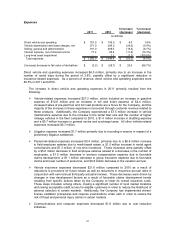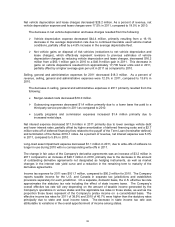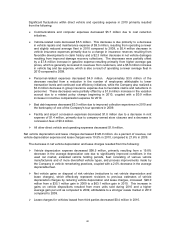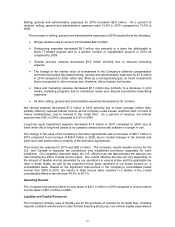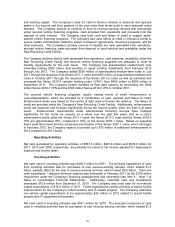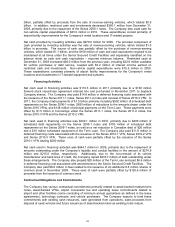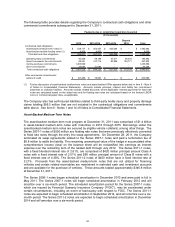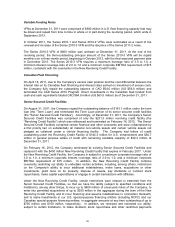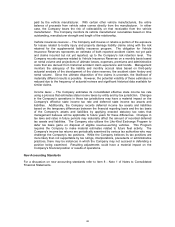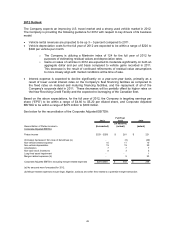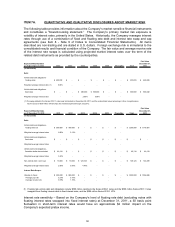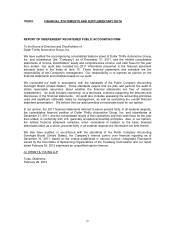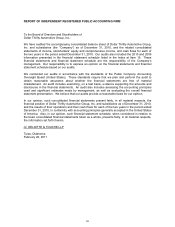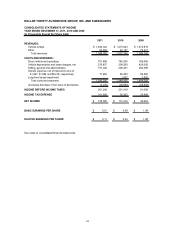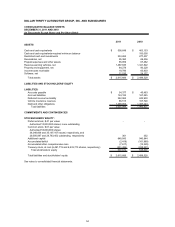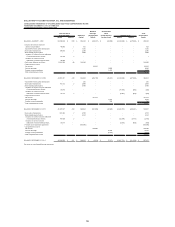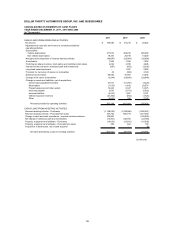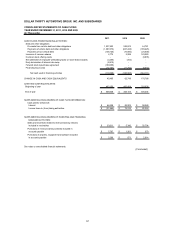Thrifty Car Rental 2011 Annual Report Download - page 49
Download and view the complete annual report
Please find page 49 of the 2011 Thrifty Car Rental annual report below. You can navigate through the pages in the report by either clicking on the pages listed below, or by using the keyword search tool below to find specific information within the annual report.availability of accelerated depreciation methods in future years. Accordingly, the Company may
make material cash federal income tax payments in future periods.
In September 2010, Congress passed and the President signed into law the Small Business Jobs
and Credit Act of 2010 (the “Small Business Act”), which extended 50% bonus depreciation
allowances for assets placed in service in 2010, retroactively to the first of the year. In December
2010, Congress passed and the President signed into law the Tax Relief, Unemployment Insurance
Reauthorization, and Job Creation Act of 2010 (the “Tax Relief Act”), which increased the bonus
depreciation allowance to 100% for assets placed in service from September 9, 2010 through
December 31, 2011, as well as provided for 50% bonus depreciation for assets placed in service in
2012. During the first quarter of 2011, the Company received federal tax refunds of $50 million
based on overpayments of estimated taxes made in 2010, as a result of the enactment of the Small
Business and Tax Relief Acts.
The Like-Kind Exchange Program has historically increased the amount of cash and investments
restricted for the purchase of replacement vehicles, especially during seasonally reduced fleet
periods. At December 31, 2011, restricted cash and investments totaled $353.3 million and are
restricted for the acquisition of revenue-earning vehicles and other specified uses as defined under
asset-backed financing programs and the Like-Kind Exchange Program. The majority of the
restricted cash and investments balance is normally utilized in the second and third quarters for
seasonal purchases.
Inflation
The increased acquisition cost of vehicles is the primary inflationary factor affecting the Company.
Many of the Company’s other operating expenses are also expected to increase with inflation.
Management does not expect that the effect of inflation on the Company’s overall operating costs will
be greater for the Company than for its competitors. Inflation did not have a material impact on the
Company’s results of operations for the three years in the period ended December 31, 2011.
Critical Accounting Policies and Estimates
As with most companies, the Company must exercise judgment due to the level of subjectivity used
in estimating certain costs included in its results of operations. The more significant items include:
Revenue-earning vehicles and related vehicle depreciation expense – Revenue-earning
vehicles are stated at cost, net of related discounts. At December 31, 2011, approximately
96% of the Company’s fleet consisted of Non-Program Vehicles.
The Company must estimate the expected residual values of Non-Program Vehicles at the
expected time of disposal to determine monthly depreciation rates. The estimation of
residual values requires the Company to make assumptions regarding the age and mileage
of the car at the time of disposal, as well as expected used vehicle auction market
conditions. The Company reevaluates estimated residual values at least quarterly and
adjusts depreciation rates as appropriate. Differences between actual residual values and
those estimated by the Company result in a gain or loss on disposal and are recorded as an
adjustment to depreciation expense at the time of sale. If the actual timing of disposal is
either shorter or longer than the life used for depreciation purposes, then a loss or gain could
result on sale. A one percent change in the expected residual value of Non-Program
Vehicles sold during 2011 would have impacted vehicle depreciation expense net by $5.0
million. The average holding term for Non-Program Vehicles was approximately 18 to 22
months for 2011.
For Program Vehicles, the Company is required to depreciate the vehicle according to the
terms of the guaranteed depreciation or repurchase program and in doing so is guaranteed
to receive the full net book value in proceeds upon the sale of the vehicle. In some cases,
the sales proceeds are received directly from the auctions, with any shortfall in value being
47


